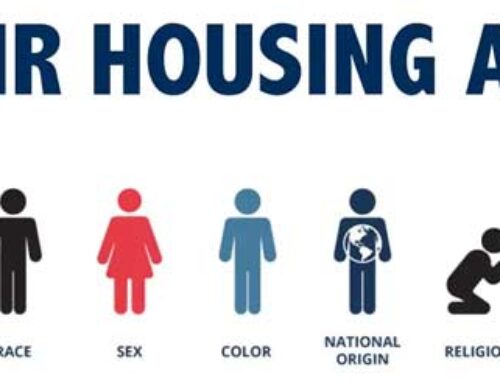Dramatic weather events such as wildfires, flooding, extreme heat, drought, and storms are on the rise all over the world due to climate change. As a result, all of these climate-related events are posing an increasingly large risk to real estate and the housing market here in the U.S.
So if you’re a homeowner or you’re planning to buy or sell a home in the future, you’ll want to consider what impact these extreme weather conditions may have on your home and its value over the long run. Knowing this important information can help you make a more informed decision about how to proceed, and the steps you should take to protect your most valuable asset – your home.
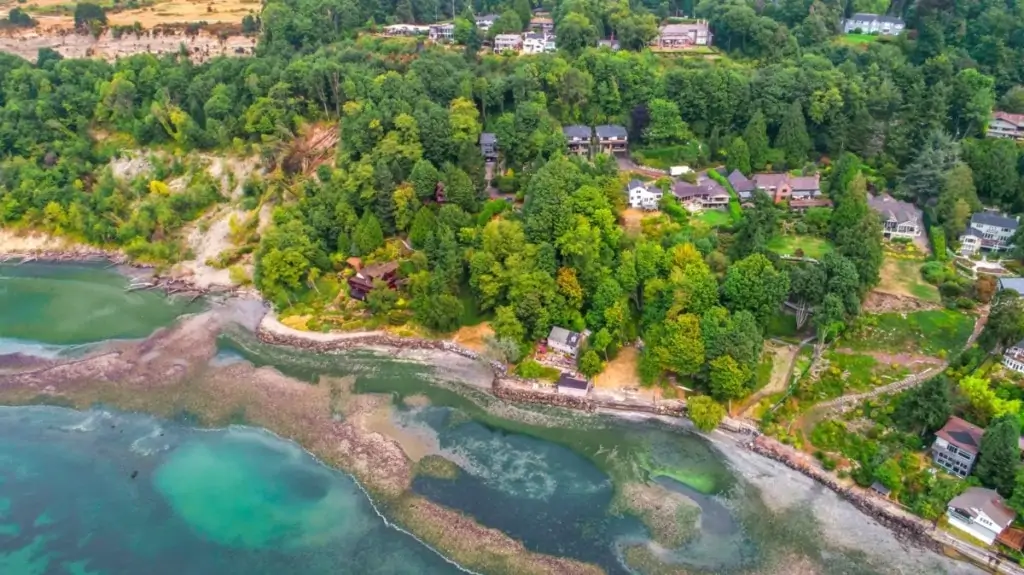
How is climate change currently affecting the housing market?
Climate change awareness among homebuyers is on the rise and many Americans are factoring climate change into their decisions about where to live. In a recent Redfin survey, nearly half of the respondents who plan to move in the next year said extreme temperatures and/or the increasing frequency or intensity of natural disasters played a part in their decision to relocate.
For those that already own homes, they are also being forced to consider how climate change is going to affect their property values. Another Redfin survey found that one in five Americans (21%) believe the increasing frequency or intensity of natural disasters, extreme temperatures, and/or rising sea levels are hurting home values in their area.
While homebuyers and sellers are aware of the risks posed by climate change and are thinking about how these risks may affect their homes, these ideas haven’t yet translated into major changes in buying habits or home prices. In fact, some of America’s disaster-prone areas are actually becoming more populous as new residents move in, which is keeping property rates steady, if not increasing them. This influx of new residents may be due to the relative affordability of homes located in these higher-risk areas.
“Homebuyers are concerned about climate change, but it’s not their top concern,” said Redfin Chief Economist Daryl Fairweather. “People have to make compromises when buying a home in order to stay within budget. Since there is already a shortage of affordable housing, many homebuyers have no other choice but to accept living in a place where climate disasters are becoming more prevalent.”
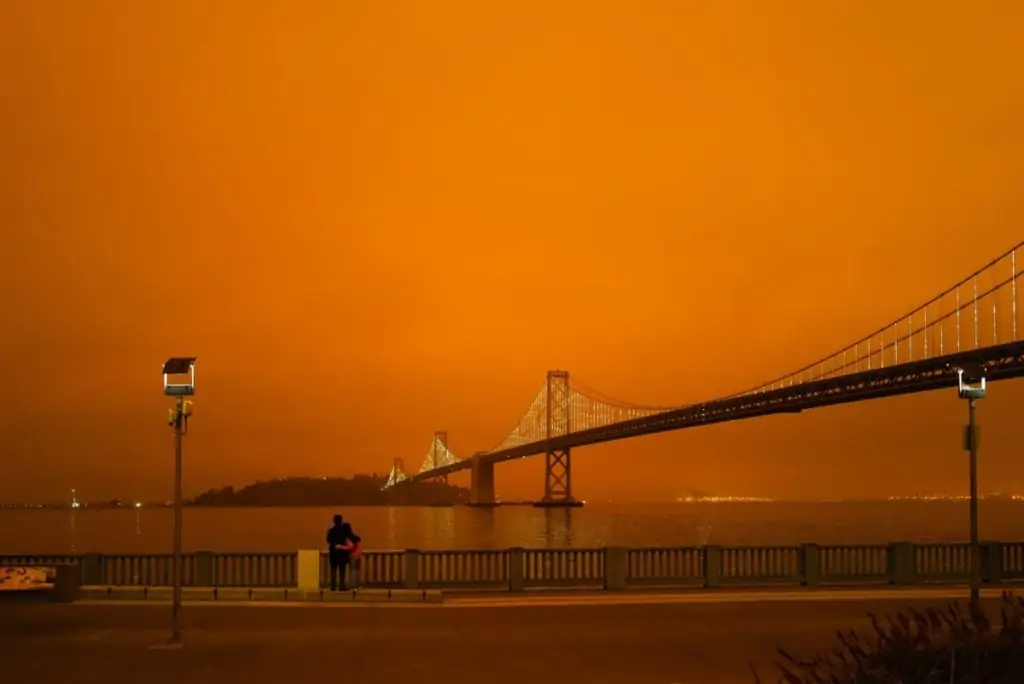
What is the impact of wildfire risk on property value?
Bigger and more destructive wildfires have ravaged the U.S. in recent years. In 2020, wildfires burned 10.1 million acres, which was the second-most acreage burned during any year since at least 1983. The Western U.S. is especially vulnerable to wildfires, with California, Texas, Colorado, and Arizona tending to have more wildfires than other states. This is largely due to their dry climates and hot weather.
As the frequency and intensity of wildfires grow, so too does the risk to nearby homes and their respective property values. According to a Redfin study, homes in high-wildfire-risk zip codes throughout California, Oregon, and Washington sold for an average of 3.9% less than those in low-risk zip codes in 2020. If fires continue to become more frequent and devastating, fewer buyers may be looking to live in high-risk areas.
In contrast, the median sale price of homes in areas with low wildfire risk increased 101% since 2012, compared to an 88% increase for homes in high-wildfire-risk zip codes. This disparity intensifies the affordability crisis in low wildfire risk areas, which results in home buyers with smaller budgets buying more affordable homes in fire-prone regions.
This trend, however, isn’t consistent across the country. For example, Utah, which has a larger share of homes facing high wildfire risk than any other Western state, is also America’s fastest-growing state. And over the last 5 years, the median home price has increased by 84%.
In California, where $628 billion worth of homes are facing high fire risk, Redfin real estate agent Christoper Anderson indicated that some buyers start rethinking their decisions when fire seasons worsen. However, once the fire season ends, much of that fear disappears. He has seen a lot of people leave the area when wildfires ramp up, but they are always replaced by new people who are willing to take the risk.

What is the impact of flood risk on property value?
Floods are a climate event that can strike extreme fear into the heart of many property owners and for good reason. In fact, the state of Louisiana is currently experiencing this fear firsthand. On August 29th, which also happened to be the 16th anniversary of Hurricane Katrina, Hurricane Ida struck the city of New Orleans. The storm caused massive flooding, power outages, and destruction across the city. Remnants of the hurricane are now making their way up the Northeast causing flash flooding in New York and New Jersey.
As of 2021, more than 23.7 million properties are already at risk of flooding and 1.7 million more properties will be at risk in just 30 years. However, while the risks are high, they are not deterring buyers. In fact, home values in high-risk areas tend to be higher than homes in low-risk ones. Since 2013, homes with high flood risk have sold for about 7% more on average than homes with low flood risk. This is likely due to the lure of luxury waterfront properties, a demand that only intensified with the pandemic and the ability to work remotely.
Naturally, flood risk is heightened if you purchase a house along the coast or near a large body of water (rivers and lakes), but even if you don’t have a view of the beach, your home could still be in a high-risk flood zone. Some of the most destructive flooding events occur due to heavy rainfall, which can happen anywhere in the U.S.
As a buyer or homeowner, it’s important to understand the extra costs and risks associated with properties in high flood risk areas. For example, home insurance policies typically do not cover flood damage and you may need separate flood insurance. It’s critical you purchase excellent flood insurance and take preventative measures to protect your house from potential flooding. On Redfin.com you can see an area’s flood risk, how much property damage flooding has caused during the year, and the estimated rate of flood insurance. For example, in Cape Coral, FL, 86% of homes are at risk for flooding and flood insurance premiums range from $225 – $2,500 per month.

What is the impact of heat risk on property value?
Heat risk estimates how much climate change might increase the typical number of hot days in a year and the likelihood of extreme heat and heatwaves. Heatwaves occur across America, but the Western and Southern states are typically the most affected. In addition, the impacts of heatwaves are often felt more heavily in densely populated urban areas like large cities. Buildings and asphalt absorb and radiate heat significantly more than plants and trees, which makes urban areas particularly dangerous.
Nonetheless, interest in warm and relatively affordable areas—especially in suburbs of large cities—is accelerating. As a result, this increase in demand is driving up property values. For example, Phoenix, AZ, which maintains a very high heat risk, was the number-one U.S. migration destination in the second quarter of 2021; and in the last 5 years, the median home sales price has risen 83%.
So for now, property values in most areas with high heat risk have yet to be majorly affected by climate change. However, some hesitancy is starting to occur among homebuyers. In a recent Redfin study, 75% of respondents said that extreme temperatures in an area would make them hesitant to buy a home there, which could affect future property values if people begin to steer away from high heat risk locations.
What is the impact of drought risk on property value?
Droughts have occurred in the western U.S. for a long time, but prolonged dry seasons, extreme heatwaves, and declines in rainfall caused by climate change are intensifying these droughts. In mid-July, more than 95% of the West was in drought.
While droughts are not as violent as other weather events like hurricanes or wildfires, they can be incredibly harmful. The most common and damaging drought-related property risk is foundation damage. As dry soil shrinks, it causes gaps beneath your foundation, which can lead to cracking and other issues. Foundation damage can negatively affect your property value, so it’s important you take proper precautions to reduce the chances of severe structural damage.
In addition to property damage, droughts can pose a major threat to communities that rely on the city’s water sources. During times of extreme drought, communities are often advised to ration water. For example, in 2021 Californians were asked to cut back on water consumption by 15%, and previously in 2015 were mandated to cut back consumption by an average of 25% statewide.
However, even in the face of high drought risk, real estate prices have yet to be negatively affected. Redfin recently analyzed 50 counties with the highest share of homes facing high drought risk. In more than half (38) of those 50 counties, more people actually moved in than moved out. For example, in Denton County, TX nearly every home faces a high drought risk. However, this county experienced a 13% net migration rate from 2016-2020, and the median home sales price has risen 27% over the last three years.

What is the impact of storm risk on property value?
Severe storm events have caused massive devastation and destruction in the U.S. in recent years. From Hurricanes Harvey and Ida to the 2021 winter storm in Texas. However, as with the other climate risks, storm risk isn’t deterring buyers. For example, Cape Coral, Tampa, and Orlando—all of which are prone to hurricanes—were among the 10 most popular migration destinations in the second quarter of 2021.
There are, however, some buyers wary of places with high storm risk. For example, Redfin agent Thomas Wiederstein of Phoenix, AZ said that due to the recent winter storms in places like Dallas, several of his out-of-state buyers shifted their home search from Texas to Arizona. Unfortunately, in this situation, buyers are trading one climate risk (storm risk) for another (heat risk).
If you decide to live in an area of high storm risk, it’s critically important that you prepare your home for major weather events to prevent damage and avoid costly home repairs. Additionally, if you’re looking to sell your home and your property doesn’t have storm-resistant features, this could hurt your resale value. Ashley Vasquez, a Redfin real estate agent in Houston, observed some homebuyers seeking out discounts when bidding on properties that lack storm-resistant features, like storm or weatherproof windows, a hurricane roof, or a storm door.
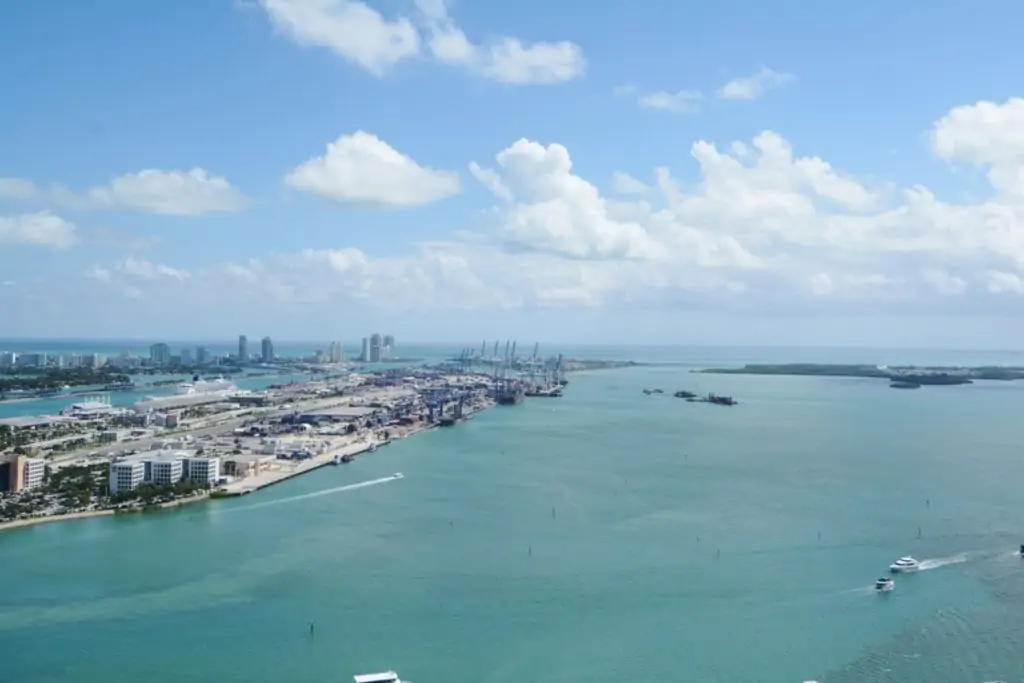
What are the future impacts of climate change on real estate and the housing market?
Whether it’s severe storms, crippling drought, or wildfires, climate change will impact both real estate and the housing market in the years to come. Here are some key changes to expect.
Higher insurance premiums
Insurance has historically been the main tool for mitigating the risks posed by extreme weather events. As weather catastrophes become more frequent, insurance costs have jumped. In 2020, almost half (45%) of surveyed homeowners with natural disaster-related insurance policies have seen their premiums increase. Assuming extreme weather patterns continue, it seems inevitable that premiums will continue to climb. In the coming years, coverage may be more limited in high-risk areas, and insurance may ultimately become too expensive or even unavailable for some.
Increased home damage
Climate-related events can be highly destructive and cause immense damage to the interior and exterior of a house. If you are concerned about your home being damaged by changing weather patterns, it’s important to take the necessary steps to mitigate risks. However, your best option for protection is to reside in a low-risk area.
Decreased value of homes in at-risk areas
While the current buyer behavior doesn’t show this trend – if extreme weather events worsen in the coming years, more areas of the U.S. may become undesirable for future homebuyers. This could cause property values in those areas to decline. Should property values decrease, many homeowners could face a situation where they lose their home equity. Homeownership, and home equity, is a major source of building wealth. As a result, it’s possible that more people will decide to rent vs. own, rather than risk declining property values.
Homeowners may also price their homes for sale in expectations of future climate risks. This means property values may be influenced not just by current hazard levels, but also by expectations of how hazards could evolve.
Increased value of homes in low-risk areas
As homebuyers, and even renters, slowly move away from negatively affected areas, relocating to lower climate risk areas may worsen competition. Should demand increase in these low-risk areas, buyers may see tougher bidding wars and ultimately more expensive homes.
Higher property taxes and housing costs
Municipalities all over the U.S. will need to make their communities more resilient in the face of climate change. Paying for mitigation and adaptation measures will likely need to be funded through an increase in property taxes and fees. Additionally, as people leave coastal communities due to flooding, or wooded areas due to wildfires, the tax base in those areas will shrink, further driving up taxes for those that remain.
“As climate change worsens, homeowners could end up with higher housing costs down the line,” said Redfin Chief Economist Daryl Fairweather. “Homeowners may need to install air conditioning in heat-prone areas or install a metal roof in a fire-prone area. If homebuyers are able to make their home livable amidst a changing climate, that could increase their home’s value. But these investments aren’t just the responsibility of individual homeowners. Local and state governments need to invest in resilient infrastructure for communities to remain livable and will need tax revenue to fund those investments.”
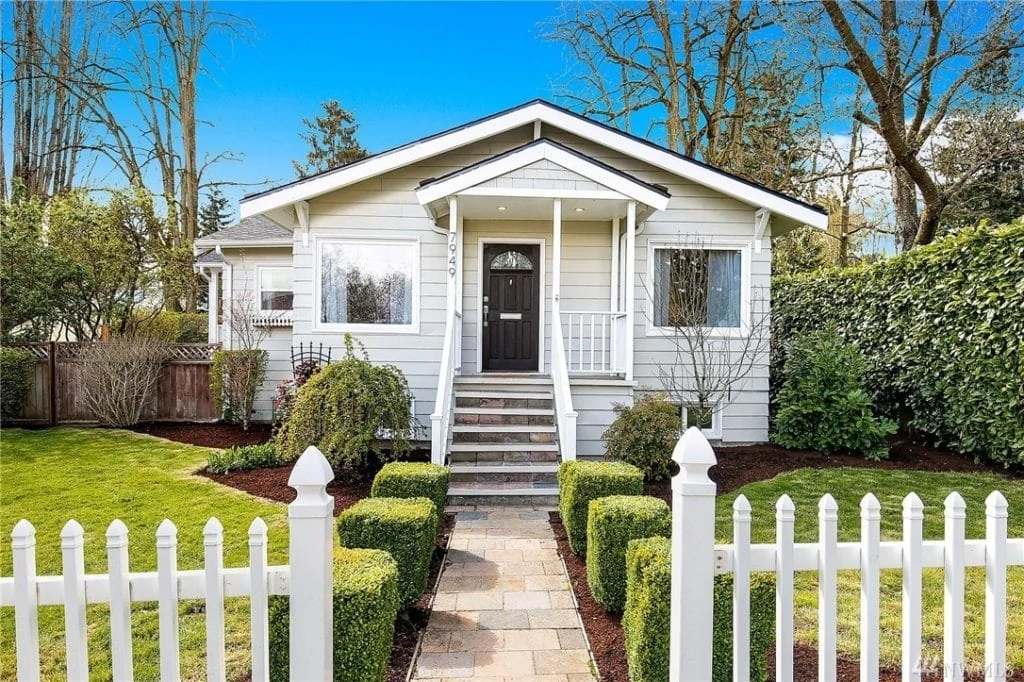
What can homeowners do to protect their property values and homes?
While homeowners can’t completely shield their properties from the effects of climate change, there are many preventative measures they can take. Here are some ways homeowners can protect their homes and start planning ahead:
1. Understand your risk
The first step you can take to protect your home and its value is to identify your exposure to risk. Redfin now publishes climate-risk data for every location on its website, which can help you make more informed decisions. For example, in Cape Coral, FL, 86% of homes are already at risk of flooding, and in 30 years 99% of homes will be at risk. While in Denver, CO only 3% of homes face the risk of flooding and that number will only increase to 4% over the next 30 years.
To further understand your risk, you can also research the most vulnerable cities by specific climate risk. See the top 10 U.S. cities with the most risk of substantial flooding, fire damage, storms, water stress (droughts), and extreme heat.* These steps will help you make more informed decisions whether you’re buying, selling, or renting a home in an area that faces a climate risk.
2. Proof your home for individual risk types
Improving your home’s resilience to climate change can reduce the chance and severity of major damage. In fact, many homeowners are already investing in specific updates to protect their homes. Nearly two-thirds of U.S. homeowners recently surveyed by Redfin have invested $5,000 or more to make their homes more resilient to at least one climate-related risk. For more information on how to protect your home and property value, check out the following guides:
- How to Heat Proof Your Home
- How to Protect Your Home From Forest Fires
- Tips to Storm Proof Your Home
- How to Protect Your Home From Flooding
- How to Prepare Your Home for Drought
3. Connect with insurance providers
If you’re moving to a new area, especially one at high risk, you’ll want to learn what types of home insurance you’ll need. Not every insurance policy covers every climate-related event, so do your due diligence to ensure your home has adequate coverage. If you’re already a homeowner, it’s still important that you check your policy and confirm with your insurance agent that you have adequate coverage. While you may never need specific climate risk insurance coverage, it will give you peace of mind and can be extremely beneficial in the event of an unexpected natural disaster.
4. Monitor property value
The best way to know if climate change is impacting the value of your home is to monitor its property value. There are a few ways to do this. First, you can receive an instant home-value estimate and a free home report on Redfin.com. By typing in your address, you’ll see a Redfin estimate for your home based on recent sales in your neighborhood. You can also monitor your property value by researching the value of other nearby properties. For more details on how to do this, check out our guide on 5 Ways to Find Real Estate Comps in Your Area.
5. Work together with your community
Homeowners and local community members can also play an important role in fighting climate change and protecting the area in which they live. For those who reside in high-fire risk areas, homeowners can work together to clear away fire-prone brush in their neighborhood. For those that live in an area of high storm risk, neighbors can exchange ideas on how to stormproof their homes. Community members can also show up at town halls and advocate for investment in climate-resilient infrastructure to help protect the entire community as a whole.
Unfortunately, the risk of climate change isn’t going anywhere. While climate risks have yet to have major negative impacts on property values across the U.S., as extreme weather events increase in frequency and severity, property values are likely to be affected.
Source- https://www.redfin.com/blog/how-does-climate-change-affect-property-values/




